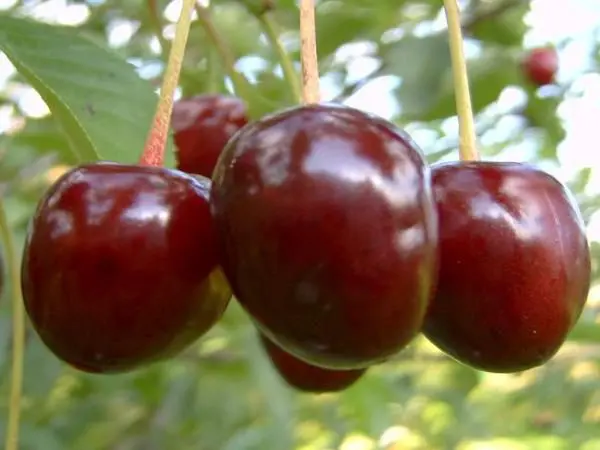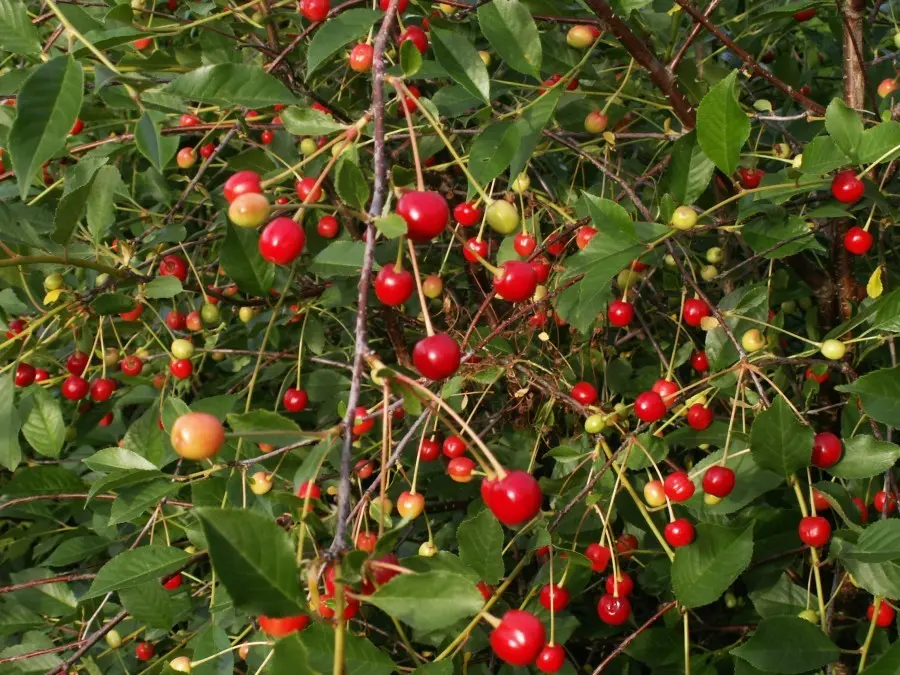Contents
Sometimes a gardener faces a difficult task: I want to set up a garden, but the plot is small. Help out dwarf trees, shrubs. Recently, they are gaining more and more popularity. In particular, dwarf cherries have many advantages over other fruit trees.
Description of the species
Low-growing cherries have a lot of advantages:
- takes up less space;
- growing faster;
- bears fruit earlier than usual varieties;
- much easier to harvest;
- easier to care for;
- suitable for windy climates as branches break less;
- small roots will not reach groundwater;
- produces the same number of fruits as a large tree.
Among the disadvantages: smaller berries of different taste. They are not as sweet as ordinary cherries, they are even tart.
Among the types of cherry dwarfs there are such: Chinese, Vladimirskaya, Saratov baby, chocolate, youth, fast, Japanese, and others.

Low-growing cherry – dwarf bush. Spreading, lush, fast-growing, very beautiful. The maximum height is 2,5 meters, the average is 70 centimeters. Begins to bear fruit faster than usual. High yield – 10-20 kilograms of berries per season. The fruits are small or medium – up to 5 grams in weight. They are densely distributed on branches. Color: from bright red to dark. Taste: sweet and sour. Berries in some varieties have an unusual, bizarre shape. For example, look at the photo of the fruits of dwarf cherries.
Among other characteristics: frost resistance, excellent adaptability to various weather conditions. What is important – the crop is suitable for long-term transportation.
Cultivation
Climate
Care and cultivation of dwarf cherries does not have any features. The main thing is to choose the right variety for the climate. For harsh northern weather, only cold-resistant varieties are taken. In the southern regions of Ukraine, Crimea, Kazakhstan, trees with medium frost resistance are planted.
If the species is chosen incorrectly, then the fruit plant may not take root. For example, stunted sand cherries from North America have not found wide distribution in our latitudes. Therefore, such varieties can only be found in nurseries.

land, soil
The only feature that must be considered when planting a dwarf cherry is its short stature. Since this is a light-loving plant, make sure that it is not shaded by other trees. Therefore, choose the south side of the garden plot. The absence of any other plants on this part is desirable. Especially conifers, because they are carriers of infectious diseases for fruit trees.
The soil is sandy. It perfectly passes moisture, allows good air circulation, has sufficient friability. Loamy will do. However, this will require more care, in particular fertilizers. Clay soil is too heavy for dwarf shrubs. You need to add sand to it.
The relief is a small hill. Dwarfs have short roots, so groundwater will not reach them.
Landing
1-2-year-old seedlings take root quickly. They also give fast growth. Before planting, inspect the roots for any affected areas, pests. Delete if any. Soak them for 7 hours.
In autumn, the land for cherries is fertilized with manure, chemical fertilizers (phosphorus, potassium). In the spring, nitrogen (urea) is added. The earth is carefully dug up.
The hole for the dwarf bush should be large enough so that the wind does not damage the plant. Optimally – almost half the growth of the seedling. It is tied to a wooden peg, which is driven into the center of the landing pit. Fall asleep with fertilized earth, ramming it. Small holes are made around the trunk for watering. Immediately after planting, water with 1-2 buckets of water.
Nutrition, disease prevention
Cherry bush is fed 3-4 times per season. In the spring, the trunk is whitened – prevention from pests. Mandatory pruning of dry shoots, diseased parts before flowering. So the plant will receive more nutrients, and the number of harmful insects will decrease much.

If the shrub is healthy, then in the fall you can remove the fallen leaves, branches, so that later they can be used as humus. The plant can be propagated by stock: using the stem and root.
Proper care will delight you with a rich harvest. And collecting it from dwarf cherries is a pleasure!
Video “Short felt cherry”
The video will introduce the variety of undersized cherries – Felt









